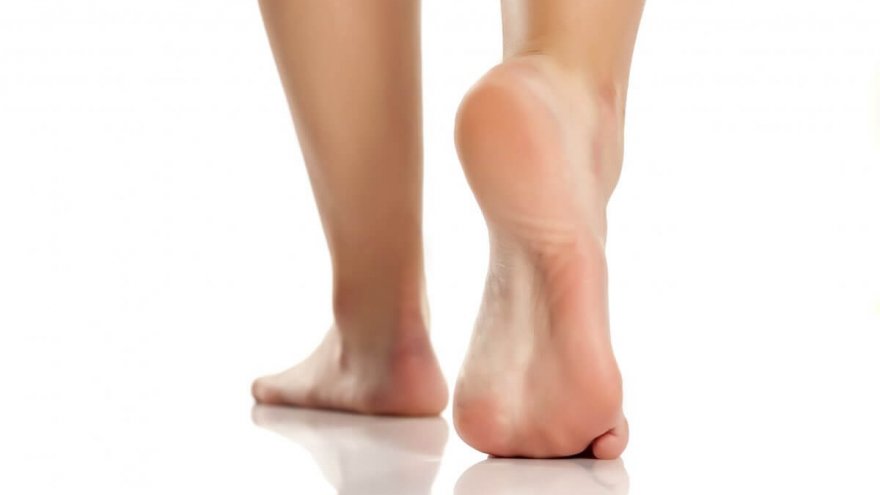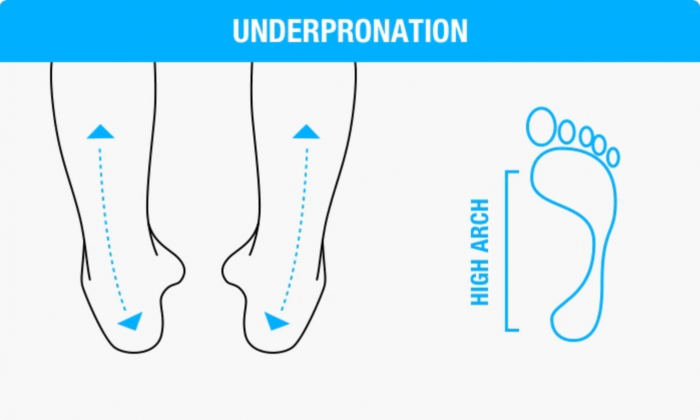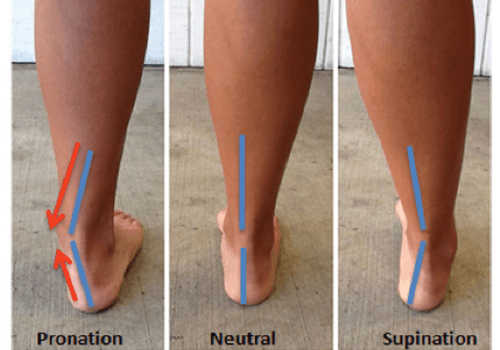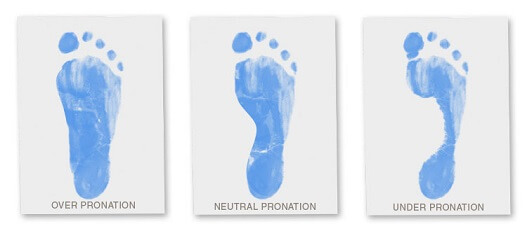Am I an Under or Overpronator? Here’s How to Do a Pronation Test

Remember when you were a little kid and you just ran with reckless abandon? You didn’t overthink it. You didn’t prepare for it. You just took off running. It was freeing and liberating and came naturally. Now, when someone decides to take up running, everyone has thoughts on what things are necessarily. If you are new to running (or if you remember back to when you were a new runner), veteran runners probably encouraged you to go to a local running store to be properly advised on what kind of shoes you should wear. New runners are often shocked by that. There are correct shoes to wear? Can’t I just purchase the prettiest pair? do you need to do a pronation test? Buying running shoes is about way more than getting a color you like. Depending on what your feet do when you run, there are shoes to help correct the problem.
What Does It Mean to Pronate?
Pronation is movement of your foot and it happens to everyone. As your foot rolls through the act of running, it acts as a shock absorber. It helps you push off evenly to take your next step. In other words, everyone pronates. It is an essential act of running! So when someone says, “You pronate,” that is not a big shocker. Everyone does.
The actual question is if you over or underpronate. That is where foot problems can come into play and a pronation test is needed.
Ideal Pronation
If your body is working perfectly, your foot will pronate 15%. By that, we mean that the foot will roll inward approximately 15%. Since most of us aren’t perfect running specimens, it stands to reason that most runners don’t pronate that ideal percentage. Knowing if you over or under pronate is something many people want to know.
What Is Underpronation?
Also called supination, when the runner under pronates the foot rolls inward after it lands. So your heel makes contact and your foot rolls at less than 15%. This means even less of the foot is taking the impact of your foot strike. In supination, most of the act of pushing off is done in the small toes on the edge of your foot instead of evenly distributing the work.

As you can imagine, supinating can lead to injury in runners. These individuals are susceptible to ankle pain and sprains, as well as calluses or bunions on the edge of the foot. In addition, under pronators often suffer from IT band issues, plantar fasciitis, and shin splints.
Statistically, less than 10% of runners supinate.
What Is Overpronation?
When you overpronate, your foot rolls more than the 15%. The heel makes the same initial contact and your foot rolls. In overpronation your foot and ankle may struggle to stabilize your foot due to the extreme rolling. Because of this, the shock is not absorbed as well as it ideally would be.

As you end the stride in overpronation, you are pushing off mainly with your big toe and second toe. Way more common, overpronation occurs in many runners. Overpronators are susceptible to IT band issues, shin splints, bunions, stress fractures, and IT band issues.
Perhaps you have noticed that the potential injuries are similar for over and underpronators. That is because if you aren’t running with ideal mechanics, the outcome can be similar.
Roughly 45% of the population overpronate.
Pronation Test
Some people do a shoe examination when they find themselves wondering, “Am I an under or overpronator?” If the outer part of your shoes are the most worn, likely you could be a supinator. If the inner part is most worn you probably are a pronator.
You can also do a wet foot pronation test to see if you pronate or supinate. Lay out some cardboard or a brown paper bag. Step in a pan of water, then stand on the cardboard. Carefully step backward off of the cardboard so you can examine your prints.

A healthy foot with a normal arch will show the heel and have a decent-sized strip of wet connecting to the forefoot. If you overpronate the entire foot will likely be visible in your print. If you under pronate the connecting strip will be quite thin.
What is a Pronation Shoe?
Pronators tend to need a stability shoe. Before you get too nervous about that, you should know that the world of stability shoes has changed in recent years. Stability shoes used to force the foot into an unnatural state of very limited movement. Now, the shoe companies are more responsive to what runners crave. They are taking a much less aggressive approach and stability shoes help keep feet happy without removing all motion.
When searching for stability shoes, there are many good ones on the market today. While everyone has a personal preference, don’t take our word for the best ones. The best tactic is to try some on.
Living With Overpronation
True, you can buy shoes specifically made for overpronation. Did you know there are also exercises you can do to help combat pronation problems? Will they fit overpronation? No. But these exercises will give you a stronger stride which may help you to prevent injury.
✓ Jump Squats – Easy as they sound, start in a squat position and lift yourself into a jump. Repeat. This exercise gives you explosive power and will help you strengthen your stride.
✓ Single Leg Deadlift – Stand flat-footed on one foot. Bend at the waist, dropping your hands to your sides toward your feet. Lift one leg extended behind you as you bend. Hold when your leg is fully extended behind you. Stand back up. Repeat five times, then switch legs.
✓ A Skips – These are a dynamic warm-up and common running drill. In an A skip, you are doing a skip in place with an exaggerated motion. You should focus on driving your knee up on each skip effort.
✓ Jump Lunge – Start in a lunge position. Jump up and land with your stance (forward and back legs switched) switching from left leg forward to right forward. Land in lunge. In this movement, you are switching legs in the air and focusing on landing softly.
Whether you are an over or underpronator, know that you can keep running and there are shoes out there to help you run comfortably and stay healthy. A pronation test will help you choose the perfect running shoes for your feet. Equally important to your overall fitness regiment are exercises like those mentioned above that can strengthen your body. If you plan to run your whole life away, you need to be sure to focus on these measures now. Your feet are counting on you!
Sources
- , Pronation, Overpronation, and Supination in Walking and Running , Website
- , What is Pronation?, Website
Latest Articles
 Is Running on a Treadmill Easier Than Running Outside?Runners have their own preferences, whether it is treadmill running, running outside on the road, or exploring trails. So...
Is Running on a Treadmill Easier Than Running Outside?Runners have their own preferences, whether it is treadmill running, running outside on the road, or exploring trails. So... Is It OK to Use Trail Running Shoes on the Road?While trail running shoes can be used on roads, especially in situations where a runner encounters mixed terrains or pref...
Is It OK to Use Trail Running Shoes on the Road?While trail running shoes can be used on roads, especially in situations where a runner encounters mixed terrains or pref... How to Fix Sore Quads After Running?Rest, ice, gentle stretching, and over-the-counter pain relievers can help soothe sore quads after running. Also, ensure ...
How to Fix Sore Quads After Running?Rest, ice, gentle stretching, and over-the-counter pain relievers can help soothe sore quads after running. Also, ensure ... 10 Fruits With The Most Electrolytes to Replace Sports DrinksThese fruits are high in electrolytes such as potassium, magnesium, and calcium, essential for hydration, muscle function...
10 Fruits With The Most Electrolytes to Replace Sports DrinksThese fruits are high in electrolytes such as potassium, magnesium, and calcium, essential for hydration, muscle function...

